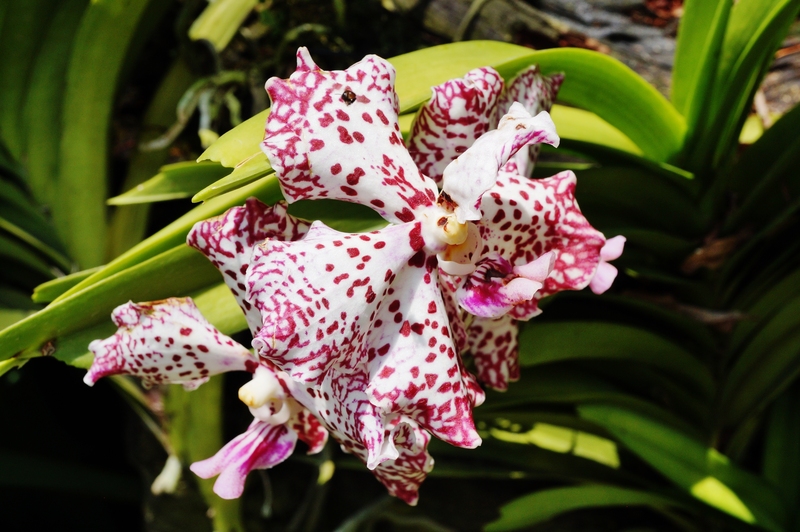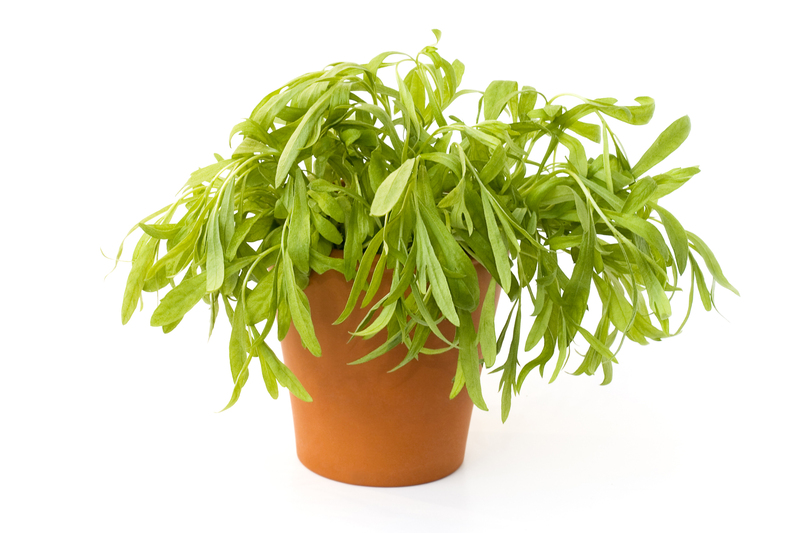Designing Your Ideal Herb Sanctuary
Posted on 21/06/2025
Designing Your Ideal Herb Sanctuary: A Comprehensive Guide
Are you passionate about gardening, cooking, or natural wellness? Imagine opening your backdoor and entering a fragrant space where fresh herbs are at your fingertips all year round. Designing your own herb sanctuary is both rewarding and practical--and it's easier than you might think. Whether you want a lush outdoor herb haven or a charming indoor herb garden, this guide will help you create the perfect space for your needs.

Why Create an Herb Sanctuary?
A well-designed herb sanctuary does more than just supply your kitchen with flavor. It becomes a source of beauty, relaxation, wellness and self-sufficiency. Here's why you should consider designing your ideal herb sanctuary:
- Easy Access: Have fresh herbs for cooking at your disposal year-round.
- Health Benefits: Many herbs possess medicinal properties that support your well-being.
- Aesthetic Pleasure: Herbs offer beautiful aromas and lush greenery for your outdoor or indoor spaces.
- Sustainable Living: Growing your own means fewer plastic-packaged herbs from the store.
- Wildlife Attraction: Herbal gardens can attract pollinators like bees and butterflies.
- Mindful Gardening: Tending to herbs is relaxing and helps relieve daily stress.
Types of Herb Sanctuaries
Before you embark on your journey to a dream herb garden, determine which style suits your lifestyle, space, and needs best. Here are some popular herb sanctuary variants to consider:
- Outdoor Herb Gardens: Perfect for larger yards or even a small patio or balcony.
- Indoor Herb Gardens: Ideal for urban dwellers and those with limited outdoor space.
- Vertical Herb Walls: Save space while creating an eye-catching green feature.
- Container Herb Sanctuaries: Flexible and easily moved as needed.
- Dedicated Raised Beds: Excellent for accessibility and soil control.
Planning the Perfect Herb Sanctuary
Proper planning ensures your herb garden sanctuary thrives. Consider these steps before you buy any plants or materials.
Evaluate Your Available Space
Will you be working with a sprawling backyard, a cozy balcony, or sunny indoor windowsills? Take note of:
- Sunlight: Most herbs require 6-8 hours of sunlight daily.
- Wind and Heat: Some herbs, like basil, need protection from harsh winds and excessive heat.
- Accessibility: You should find it easy to harvest, water and care for your herbs.
Set a Purpose
What will you use your herb sanctuary for? Consider these popular uses:
- Culinary: Are you dreaming of fresh basil, rosemary, thyme and mint for your favorite recipes?
- Medicinal: Would you like to create tinctures, teas, or balms using herbs like chamomile, lavender and echinacea?
- Aromatic: Do you wish to scent your home or outdoor areas naturally with lavender, lemon balm or sage?
- Ornamental: Some gardeners grow herbs primarily for their beauty and pollinator benefits.
Choose Your Herbs Wisely
Different herbs require different care and climates. To ensure a flourishing herb haven:
- Research local climate: Choose herbs suited to your zone.
- Balance annuals and perennials: Annuals like basil grow quickly, while perennials like thyme return each year.
- Group by water needs: Mediterranean herbs (oregano, thyme, rosemary) need less water, while basil and mint prefer more.
Design Your Space
Now for the fun part--envision your perfect herbal refuge!
- Map it out: Draw a simple map, planning the arrangement of raised beds, containers or vertical walls.
- Mix heights: Layer taller herbs in the back and cascading ones at the front for both aesthetics and sun exposure.
- Incorporate pathways: Stone or wood chip paths invite exploration without disturbing your plants.
- Add focal points: Consider a cozy bench, bird bath, or artistic marker as the centerpiece of your sanctuary.
Essential Elements of Your Ideal Herb Sanctuary
No matter your space or style, these features can elevate your herb garden sanctuary from simple to sublime:
1. Quality Soil and Drainage
The foundation of any bountiful herb garden is nutrient-rich, well-draining soil. You can:
- Enrich garden beds with compost and organic matter.
- Use potting mix for containers, ensuring adequate drainage holes.
2. Sustainable Watering
Install a simple drip irrigation system or use watering cans with rain barrels. Group herbs by their water needs for efficiency.
3. Creative Containers and Raised Beds
For those with limited space, containers, window boxes, and raised beds are invaluable. Choose clay or ceramic pots for their breathability, and don't be afraid to upcycle buckets, teapots, or wooden crates for a whimsical touch.
4. Companion Planting
Group herbs that benefit each other. For example, plant basil near tomatoes to improve growth and flavor, or lavender near roses to deter pests.
5. Decorative Touches
- Plant markers: Hand-painted stones or engraved stakes for easy identification.
- Outdoor lights: Solar-powered fairy lights add evening ambiance.
- Artistic pots and trellises: Express your style with colorful ceramics or wrought iron features.
Popular Herbs for Your Sanctuary
While the list of useful herbs is nearly endless, here are some favorites to consider for your herbal oasis:
- Basil: Loves warmth and sun; perfect for Italian dishes.
- Mint: Refreshing, easy to grow, but best kept in containers as it can take over a garden.
- Rosemary: Woody, drought-tolerant, and great for roasting or breads.
- Thyme: Low-growing and flavorful for a variety of recipes.
- Parsley: Biennial but usually grown as an annual; essential in many cuisines.
- Cilantro (Coriander): Quick to bolt in hot weather; grow successive batches.
- Dill: Tall, feathery foliage; pairs beautifully with fish and potatoes.
- Lavender: Aromatic, pollinator-friendly, and a fragrant addition to sachets and desserts.
- Sage: Hardy, great for stuffing and teas.
- Chives: Perennial; their mild onion flavor enhances salads and soups.
Growing Herbs Indoors Year-Round
If outdoor space is limited, you can still enjoy a robust indoor herb sanctuary. Here's how:
- Lighting: Place herbs in a south-facing window or supplement with LED grow lights.
- Pots: Ensure good drainage; group herbs by similar water and light needs.
- Humidity: Mist plants or group pots together to maintain moderate humidity.
- Rotation: Turn pots regularly for even growth.
Maintaining Your Herb Sanctuary
A thriving herb garden requires regular care, but it rewards you with beauty and bounty. Establish a simple routine with the following practices:
- Water consistently: Herbs generally prefer slightly dry conditions; always check before watering.
- Pinch and harvest regularly: Snipping herbs encourages bushier growth and prevents flowering (bolting) in many varieties.
- Fertilize sparingly: Too much fertilizer, especially nitrogen, can reduce flavor intensity.
- Control pests naturally: Use neem oil, insecticidal soap, or hand-picking to keep pests at bay.
- Mulch: Suppresses weeds and helps retain soil moisture, especially outdoors.
Guidelines for Organic Growing
Many choose an organic herb sanctuary for health and environmental reasons. Use organic seeds or starts, compost, and avoid chemical pesticides or fertilizers for the freshest, purest harvest.

Harvesting, Preserving, and Enjoying Your Herbs
The true joy of a personal herb garden sanctuary is reaping what you sow. Here's how to make the most of your harvest:
When and How to Harvest
- Morning's Best: Harvest after dew has dried but before the sun is hot, when flavors are most concentrated.
- Method: Use clean, sharp scissors to snip stems just above a leaf junction.
- Leave Plenty: Never take more than 1/3 of the plant at a time to allow for regrowth.
Preserving Your Bounty
- Drying: Air-dry in bundles or use a dehydrator for long storage.
- Freezing: Chop and freeze in ice trays with water or oil for quick use.
- Infusions: Create herb butters, oils or vinegars as gifts or for your own kitchen.
Creative Uses for Homegrown Herbs
- Culinary delights: Add to sauces, soups, salads and beverages for restaurant-quality flavor.
- Tea and tonics: Brew relaxing or invigorating herbal teas with chamomile, mint, or lemon balm.
- Spa and wellness: Incorporate herbs into homemade scrubs, oils, and bath sachets.
- Decor: Garnish plates, tie bundles for drying, or use fresh-cut sprigs in vases.
Your Ideal Herb Sanctuary Awaits
Designing your own herb sanctuary is a gratifying way to connect with nature, nurture your culinary creativity, and support your wellbeing. Whether your sanctuary is modest or grand, indoors or out, what matters is your personal touch. Start with a few easy herbs, expand as you gain confidence, and soon you'll enjoy an abundant, fragrant escape--right at home.
Remember, every herb garden sanctuary reflects its caretaker. With a little planning and regular tending, you'll have a flourishing herb haven that delights your senses and enhances your life for years to come.
Further Reading & Inspiration
- The Herbal Apothecary by JJ Pursell
- The Cook's Herb Garden by Jeff Cox & Marie-Pierre Moine
- Online sources like American Herb Society and Royal Horticultural Society for expert tips.
Get started today--and watch your herb sanctuary grow into a source of inspiration, sustenance and peace.

